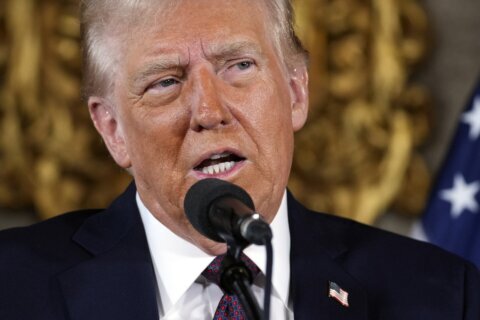The U.S. economy is on relatively solid footing heading into 2025. But while inflation has cooled, progress has been choppy and inconsistent at times. Labor markets have softened, and the Federal Reserve has begun cutting interest rates from multi-decade highs.
[Sign up for stock news with our Invested newsletter.]
Many economists, including Federal Open Market Committee (FOMC) members, anticipate a soft landing for the U.S. economy in 2025 that includes slowing gross domestic product growth but no recession. However, a single misstep in Fed policy could have major negative implications for the economy, making the next several months a critical period for the central bank. If the Fed cuts rates too quickly, it could trigger a disastrous rebound in inflation. If it cuts rates too slowly, it could drag the economy down into a recession.
Economic recessions are no reason for panic and have been a regular occurrence for centuries. However, investors can make the most of a difficult situation by knowing which risk factors to watch and how to position their portfolios to optimize their performance if a recession is looming in 2025.
2025 Recession Risk Factors
Many factors can trigger or contribute to a recession, but two specific factors are likely the biggest risks to economic stability in 2025.
Inflation
Any investor who hasn’t been living under a rock for the past two years is already aware that the primary economic risk factor in 2025 is inflation. After reaching a 40-year high of 9.1% in June 2022, year-over-year consumer price index inflation has fallen to just 2.6% as of October 2024.
The Federal Reserve can celebrate the progress it made in 2024, but the latest core personal consumption expenditures (PCE) price index reading in late October suggests it’s too early to declare victory over inflation just yet. Core PCE, which excludes volatile food and energy prices and is the Fed’s preferred inflation measure, was up 2.7% year over year in September, above the FOMC’s 2% target.
Tariffs
The second economic risk factor in 2025 is tariffs. President-elect Donald Trump has pledged to implement aggressive tariffs on goods imported from China and other U.S. trade partners around the world, making tariffs a central part of his economic plan. Supporters of this tariff strategy say it will help U.S. businesses compete with lower-cost international businesses and encourage American companies to hire American workers. However, critics of the tariff strategy argue the tariffs will force U.S. companies to pay higher prices for imported goods and components, and many of these companies will simply pass on those higher costs to consumers by raising prices. Widespread price hikes could be a nightmare scenario for an economy that is already dealing with elevated inflation.
To make matters worse, the last leg of the inflation battle may be the most difficult period for the Fed thanks to so-called sticky inflation. Sticky inflation is inflation in goods and services that have prices that are not very responsive to monetary policy adjustments, such as children’s clothing, auto insurance and medical products. Even as inflation in other areas of the economy continues to fall, sticky inflation may keep the Fed from reaching its inflation target for longer than investors had hoped and force the central bank to slow the pace of its rate cuts.
In its latest long-term economic projections in September, the FOMC called for two more 25-basis-point rate cuts by the end of 2024 and four additional cuts in 2025, bringing the fed funds target range down to between 3.25% and 3.5% entering 2026. However, investors are skeptical that the Fed can stick to its plan. The bond market is pricing in a less than 60% chance that the FOMC will pull the trigger on a rate cut in December and only about an 11% chance that it will cut rates four or more times by the end of 2025.
[Donald Trump Stocks: 8 Stocks Owned by the GOP Nominee]
Will There Be a Recession in 2025?
Fortunately, inflation and elevated rates have not yet dragged down the U.S. economy, but investors should continue to monitor the labor market and other economic data in the coming months as tight monetary policy often has a lagging impact on growth.
The U.S. economy added just 12,000 jobs in October, its worst month of jobs growth since December 2020, though that figure was likely skewed lower from the effects of hurricanes and a strike at Boeing Co. (Ticker: BA). The U.S. unemployment rate remained at 4.1%. U.S. GDP growth slowed from 3% in the second quarter to 2.8% in the third quarter of 2024. The latest Federal Reserve economic projections suggest that growth will slow to an annual rate of 2% in 2025.
After spending more than two years inverted, the U.S. Treasury yield curve flipped back to positive territory in the second half of 2024, a positive sign for the economy. U.S. credit card debt stands at an all-time high of more than $1.17 trillion, but delinquency rates on that debt improved from 9.1% to 8.8% in the most recent quarter. Auto loan delinquencies recently hit a 15-year high, another potential red flag investors should monitor to gauge U.S. consumer strength. A 4.1% unemployment rate is not historically high, but it is well above 2023 lows of 3.4%.
DataTrek Research co-founder Nicholas Colas says U.S. searches for “remote work” are at a five-year high, an under-the-radar indication that the economy is healthy in 2025.
“The real ‘tell’ about the trajectory of the U.S. economy likely lies in American workers’ return to the office. If a recession is close, we should see office occupancy turn meaningfully higher as employees trade remote work for job security,” Colas says.
The S&P 500 is on track to deliver its second consecutive year of 20%-plus gains as investors cheer earnings growth, Fed rate cuts and Trump’s plan to extend the 2017 corporate tax cuts that are set to expire at the end of 2025. However, the New York Fed’s recession probability model suggests there is still a 42% chance of a U.S. recession sometime in the next 12 months.
Bill Adams, chief economist for Comerica Bank, says the economy is in good shape heading into 2025, and Trump’s election victory may have his wealthy supporters in the spending mood in the coming year.
“A lot of dudes will be buying new trucks, bigger boats and nicer jets next year. It’s hard to put a number on this tailwind for high-end consumer spending, but it will almost certainly be a tangible support to economic growth in 2025,” Adams says.
What to Invest in During a Recession
While it’s never something to wish for, if a recession does materialize, there are several general strategies investors can take to manage risk and take advantage of opportunities should the U.S. economy falter in 2025.
First, consider reducing exposure to volatile stocks and increasing cash holdings. Cash may not be the most exciting play, but it reduces market risk and provides financial flexibility if a recession creates potential buying opportunities in 2025. In addition, investors can earn more than 4% interest on a one-year certificate of deposit right now, potentially locking in that yield even as the Fed continues cutting rates.
Certain stocks and market sectors are more defensive than others and tend to outperform the rest of the market during recessions. Utility stocks, health care stocks and consumer staples stocks are considered defensive investments because their earnings tend to be insulated from economic cycles and swings in consumer confidence.
In addition, certain individual stocks have outperformed during each of the past two U.S. recessions. Walmart Inc., Netflix Inc. (NFLX) and T-Mobile US Inc. (TMUS) are just three examples of stocks that beat the S&P 500 in the bear markets of both 2008 and 2020.
Investors with longer-term financial goals have another alternative as well: Stay the course and simply ignore any recession.
Mary Ann Bartels, chief investment strategist at Sanctuary Wealth, says the S&P 500 is in an extended bull market similar to its bull run from 1995 to 2000. Bartels says intra-year corrections are common during extended bull market runs, but investors who stay the course have been rewarded in the end.
“We believe the longer-term track is for the S&P 500 over the back end of the decade to reach 8,000 to 10,000,” Bartels says. At the time of this writing, the benchmark index trades below the 6,000 level.
“We believe this is fundamentally driven by the productivity gains from AI and a strong U.S. economy, aided by maintaining lower corporate taxes, lower interest rates and the ongoing stimulus from the Biden administration’s pieces of legislation (i.e., Infrastructure & Jobs, Inflation Reduction, CHIPs) that allow companies to continue to post strong earnings growth.”
[See: Artificial Intelligence Stocks: The 10 Best AI Companies.]
More from U.S. News
9 Best ETFs to Buy for a Recession
8 Best Investments for a Trump Presidency
Bitcoin vs. Ethereum: Which Is the Better Buy?
Recession 2025: What to Watch and How to Prepare originally appeared on usnews.com







